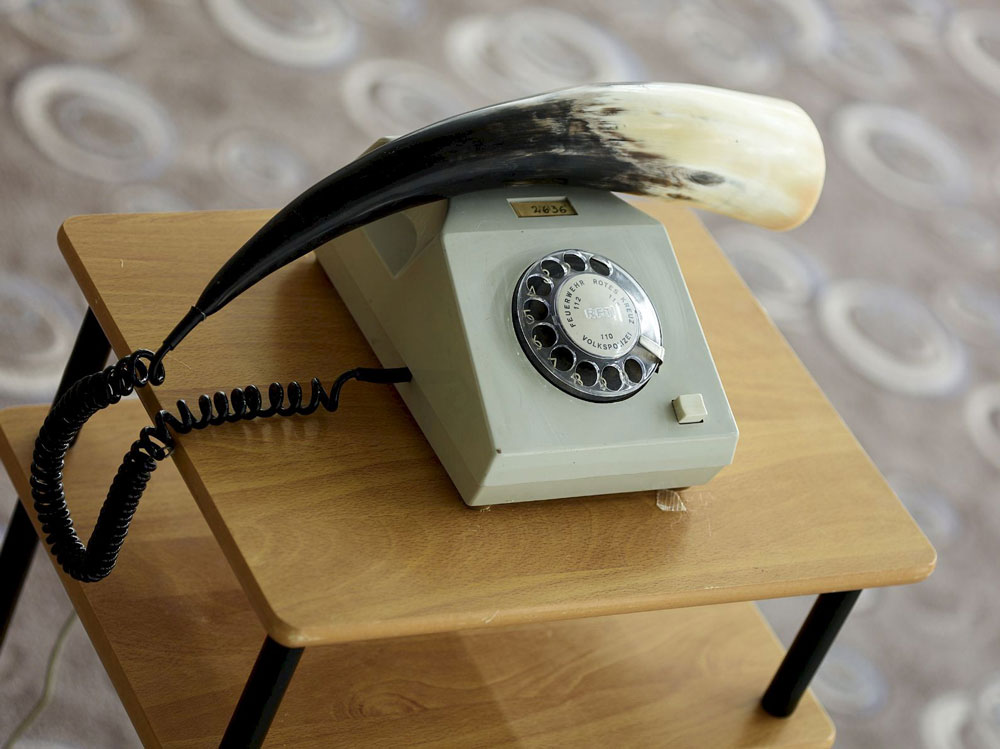ART CITIES:Berlin-Henrike Naumann
 Growing up in Eastern Germany, Henrike Naumann experienced extreme-right ideology as a predominant youth culture in the 90s. Her work reflects on the history of the right-wing terrorism in Germany as well as on today‘s broad acceptance of racist ideas. She is interested in the mechanisms of radicalization and how they are linked to personal experience and youth culture.
Growing up in Eastern Germany, Henrike Naumann experienced extreme-right ideology as a predominant youth culture in the 90s. Her work reflects on the history of the right-wing terrorism in Germany as well as on today‘s broad acceptance of racist ideas. She is interested in the mechanisms of radicalization and how they are linked to personal experience and youth culture.
By Efi Michalarou
Photo: KOW Archive
Henrike Naumann’s installations restage living spaces of the 1990s (teenage bedrooms, living rooms and high street shop interiors) rebuilt in detail with period furnishings. For East Germans, the 90s was a time of immense social change; with the fall of the GDR in 1989, there came an influx of western models of liberalism and neoliberalism. It was also during this decade that rightwing extremism emerged in the east; Zwickau later became infamously associated with the National Socialist Underground (NSU), a neo-nazi terror group that lived in hiding, among the newly bourgeoisie residents. Henrike Naumann’s solo exhibition “Ostalgie”, at KOW in Berlin explores the historical dimensions of a particular flavor of nostalgia: Ostalgie, the wistful yearning for life in socialist East Germany. Like any other sentiment in capitalism, Ostalgie has been merchandised. Henrike Naumann’s new video “Die Monotonie des Yeah Yeah Yeah” embedded in the original furnishings of a 1990s shoe store in Brandenburg, examines the nexus between the marketization of memories and the construction of a new East German identity. The piece focuses on the birth of today’s East Germans from the beat of dedicated Ostalgie club nights. In the logic of history’s necessary progression, the past could not possibly have been better than the future. With the collapse of communism, the authoritarian rollback around the world, and the onset of global warming, however, the future has lost its allure as a social vision. On the other hand, Ostalgie is also a form of resistance, a counter-memory that defies a hegemonic culture of memory and commemoration as much as the colonialization of East German lived realities. In the gallery’s ground-floor showroom, Naumann’s new installation “Ostalgie (Urgesellschaft)” turns the spotlight on the materiality of anthropological narratives and reactionary social models. East German everyday objects mingle with cartoonish furniture for a Flintstonesque “neo-Paleolithic” space, Naumann’s work inquires into the abiding appeal of utopias that promise to reduce the complexity of contemporary life and beckon with the construction of an ostensibly simple past. Sexual, racial, and social structures that are unmistakably steeped in violence and raw power are the intellectual constants of this imaginary retrotopia. Mass unemployment, the devaluation of people’s achievements, flexibilization, and the disintegration of social bonds were the landmarks of an East Germany that looked like a jungle; until 1995, West German public officials who volunteered to chart it were paid what was known as the outback bonus. Only in this “land before our time” did the “East Germans” come into being as an identifiable demographic recognized as such by both its members and outsiders. Probing the sediments of the past, Martin Hoop is a mine shaft leading down into the cryptic semiotic systems of the years after the fall of the Wall. “2000”, an ensemble on view in the downstairs gallery, combines recent and earlier sound and video pieces to trace the genesis of the challenges of Germany today. This is the soil in which Ostalgie struck deep roots. Unemployed miners, dangerous far-right crackpots, a fanatical fundamentalist, and the hard-boiled executive Birgit Breuel, who led the privatization of East Germany’s industries and was commissioner general of the 2000 world’s fair in Hanover: they are the protagonists who put their stamps on the post-socialist crash and redevelopment. Furniture, rugs, and TV sets anchor the recollection of a future frozen in an infinitely distant yet recent past.
Info: KOW Berlin, Brunnenstr. 9, Berlin, Duration: 1/2-6/4/19, Days & Hours: Tue-Sat 12:00-18:00, www.kow-berlin.com






